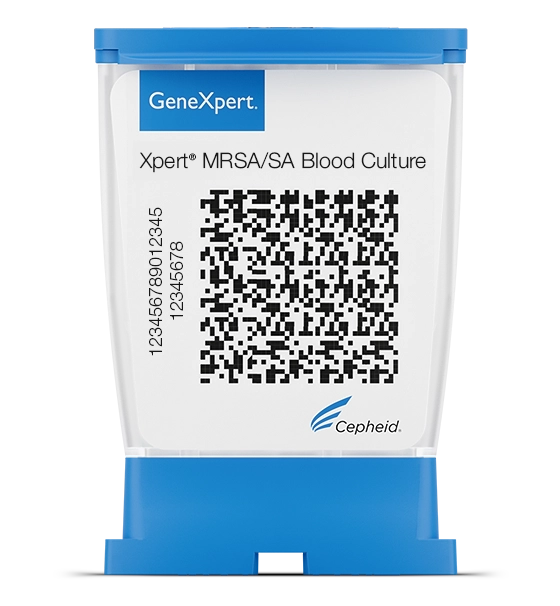

Limit the spread. Improve the outcome.
Every time a microorganism becomes resistant to an antibiotic, we lose another vital weapon in the war against infection. Newly resistant microorganisms are emerging—and spreading globally—every day. The result: antimicrobial resistance (AMR). In the very near future, we may be left without any drugs at all to fight serious, resistant infections.1

What is “The Antibiotic Apocalypse”?
The Antibiotic Apocalypse. It’s more dangerous than we thought.

What is “The Antibiotic Apocalypse”?
The Antibiotic Apocalypse. It’s more dangerous than we thought.
Better Antibiotic Stewardship with GeneXpert®


Carbapenemases
Dr. Tim Neal, Infection Control Doctor at Liverpool Clinical Laboratories, details how rapid molecular diagnostic solutions are critical to staying ahead of the emerging threat of carbapenemase-producing Enterobacteriaceae (CPE).


Carbapenemases
Dr. Tim Neal, Infection Control Doctor at Liverpool Clinical Laboratories, details how rapid molecular diagnostic solutions are critical to staying ahead of the emerging threat of carbapenemase-producing Enterobacteriaceae (CPE).

Thierry Naas – French National Reference Center for Antibiotic Resistance
New EU One Health Action Plan Against Antimicrobial Resistance
The European Commission (EC) adopted a new One Health action plan against antimicrobial resistance (AMR) in June 2017. There are three key objectives to the plan:
- Make the EU a best practice region through better evidence, coordination, and surveillance
- Boost research, development and innovation in order to control the spread of AMR
- Shape the global agenda on AMR and the related risks
The EC recognizes that diagnostics are crucial for differentiating between bacterial and viral infections and identifying AMR, so that the most appropriate treatment can be given in a timely manner. Thus, the EC has stated that they will:
- Support research into the development of new diagnostics tools in particular on-site tests in human and animals to guide practitioners regarding the use of antimicrobials
- Support the use of IT solutions in developing tools for diagnosing human and animal infections
- Encourage the uptake of diagnostics in medical and veterinary practice, e.g. through innovation procurement.
The full report can be viewed here.

Related White Papers & Webinars
Simplification of testing and treatment in the quest to eliminate hepatitis C infection
Globally, 71 million people are living with hepatitis C virus (HCV) infection, but the burden of HCV continues to increase. Between 2015 and 2030, WHO targets include reducing new HCV infections by 80% and HCV deaths by 65%, and increasing HCV diagnoses from <20% to 90% and the number of eligible persons receiving HCV treatment from <10% to 80%. To achieve these targets, targeted interventions are needed to enhance HCV testing, linkage to care, and treatment (“the HCV care cascade”). This presentation reviews available evidence on strategies that have been successfully used to enhance HCV testing, linkage to care.
Early diagnosis of HIV and use of molecular Point-of-Care HIV testing as part of a comprehensive strategy to end HIV transmission
According to UNAIDS1 the world is embarking on a Fast-Track strategy to end the AIDS epidemic by 2030. There is a strong global consensus that powerful tools now exist to end the AIDS epidemic. HIV treatment can dramatically extend the lifespan of people living with HIV and effectively prevent HIV transmission. HIV testing is a crucial element, where a positive result offers the opportunity to start treatment as soon as possible and a confirmed negative result opens the possibility to start quickly with Pre-Exposure Prophylaxis (PrEP). On the other side, HIV programs will only be effective if community groups and organisations are part of the implementation. This webinar will explore the benefits of molecular Point-Of-Care HIV testing, within the context of a community centre for men who have sex with men (MSM) and Transgender Women (TW), for three different applications: confirmation of a positive HIV rapid test, detection of an acute HIV infection, and screening of acute infections at the start of PrEP. 1 http://www.unaids.org/sites/default/files/media_asset/JC2686_WAD2014report_en.pdf CE-IVD. In Vitro Diagnostic Medical Device. Not all tests available in all countries. Not available in the U.S.
The Neglected STI: Trichomonas vaginalis
Among US women ages 14-49 the prevalence of Trichomonas vaginalis infection is estimated to be 2.3 million, though 85% of women found to have trichomoniasis report no symptoms. With varied complications such as increased risk of HSV-2/HIV acquisition, pelvic inflammatory disease and pre-term birth it has become increasingly important to identify and treat these patients quickly. This webinar will explore the renewed interest to screen and diagnose T. vaginalis in women. It will examine current testing methods available and provide updates regarding treatment options.
Antibiotic Stewardship in the Emergency Department
This webinar discusses the importance of diligent antimicrobial stewardship and accuracy of diagnostic tests for the detection of Group A Streptococcus pharyngitis. It provides commentary on the high confidence that molecular testing affords the antibiotic steward and how technology can reduce the practice of prescribing antibiotics "just-in-case" there is an infection, especially as testing moves closer to the patient.
Related Product Links

Xpert® Carba-R

Xpert® MRSA/SA Blood Culture

Xpert® C. difficile BT

Xpert® MTB/RIF Ultra
1. World Health Organization. “Antimicrobial resistance: global report on surveillance.” June, 2014.
3. CDC. Antibiotic resistance threats in the United States, 2013. https://www.cdc.gov/drugresistance/threat-report-2013/index.html. Accessed 12 July 2018.
4. ECDC. Clostridium difficile infection. Accessed Nov 25 2014. http://www.ecdc.europa.eu/en/healthtopics/Healthcare-associated_infections/clostridium_difficile_infection/pages/index.aspx
5. Gerding DN, et al. Measures to Control and Prevent Clostridium difficile Infection. Clin Infect Dis. 2008 Jan 15;46 Suppl 1:S43-9.
Reference: European Commission. A European One Health Action Plan against Antimicrobial Resistance (AMR). June 29, 2017.





